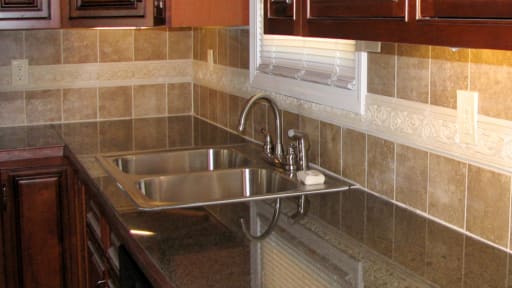Undermount vs Drop-In Kitchen Sink Options
Posted by Lesley F. on 7th Jun 2023

When embarking on a kitchen remodel project, you'll have many stylistic choices to make—from the finish on your cabinets to the type of tile for your backsplash. One selection that may seem relatively straightforward at first—until you start examining your options—is what to pick for your new kitchen sink. When deciding from the range of kitchen sinks available to you, one key factor will likely guide your choice: Do you want a top mount or undermount sink?
The difference between a top mount and an undermount sink is simple.
Top mount sinks—also called drop-in sinks—have a visible rim around them that holds the sink in place. In contrast, because an undermount sink is installed from underneath the counter, its lip is hidden for a seamless look. Undermount sinks make it easier to clean your counters—but drop-in sinks are themselves easier to clean.
Here are four key things to keep in mind when choosing between a top mount and undermount for your new kitchen sink.
An undermount sink allows for more countertop space.

Because the lip of an undermount sink is attached underneath the countertop, this sink option allows the useable counter space to extend right up to the sink itself. For smaller kitchens, these additional inches of counter space can make a big difference in everyday utility, making undermount kitchen sinks ideal options for homeowners who are tight on room.
Undermount sinks make it easier to clean your counters—but drop-in sinks are themselves easier to clean.
Keeping your kitchen neat and tidy is key to making the room look as wonderful everyday as it does on the day you finish your remodel. Both undermount and drop-in sinks offer distinct advantages for your daily cleaning routine. The lack of a visible lip with an undermount sink makes it quite a bit easier to clean your counters; you can sweep any debris from your counters right into the sink. However, top mount sinks are the simplest of the two types of sink to keep clean themselves. This is because the gap where the top of an undermount sink meets the countertop accumulates food particles and other debris and can be difficult to keep clean.
Drop-in sinks are less expensive and easier to install.

For do-it-yourselfers on a budget, top mount sinks offer obvious advantages in both ease of installation and upfront price. The average homeowner can install a typical drop-in sink in a preexisting cut-out within an hour; undermount sinks require significantly more DIY know-how. Depending on your exact choice, top mount sinks are also significantly less expensive. Undermount sink options often cost 50 to 100 percent more than drop-in varieties.
You’ll maximize the return on your investment with an undermount sink.
Drop-in sinks may cost you less at the time of installation, but they'll also prove less of a return on your investment in terms of resale value—something that concerns many homeowners considering a kitchen remodel . Because drop-in sinks are an older design, many would-be home buyers consider them to be dated; undermount sinks, on the other hand, are often seen as a sign of a more recent, higher-end (and thus more valuable) kitchen.
About The Author
Lesley F. graduated from Brown University and her professional experience includes researching, assessing and aggregating real estate market statistics, such as vacancy rates, market rents, absorption, and inventory; authoring marketing materials, including pitch books, offering memoranda, and marketing reports.
The articles and other content contained on this website/blog are provided for informational purposes only and should not be relied upon for any purposes. While it is our goal to provide you with up-to-date, relevant and useful information on a wide range of topics, we make no representations or warranties of any kind, whether express or implied, concerning the reliability, suitability, completeness or accuracy of any of the information made available on this site. The articles and information contained on this site are not intended to provide legal, accounting or other professional or business advice and should not be treated as a substitute for the advice of a professional with knowledge of the facts and circumstances of your specific situation. By accessing this site, you agree that you will not seek to hold E.C. Barton & Company or any of its affiliates liable for any losses or unanticipated costs or assert any other claim based on your use of this site or on the reliance on the content contained herein.


